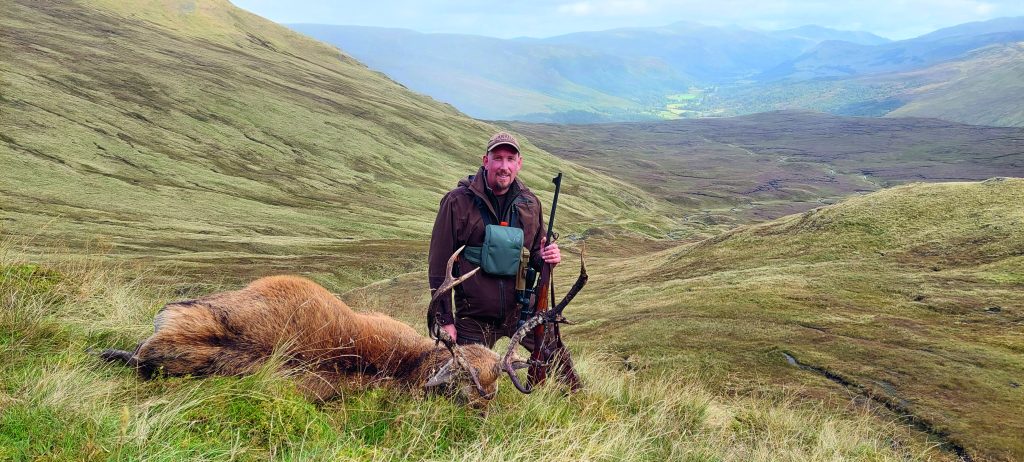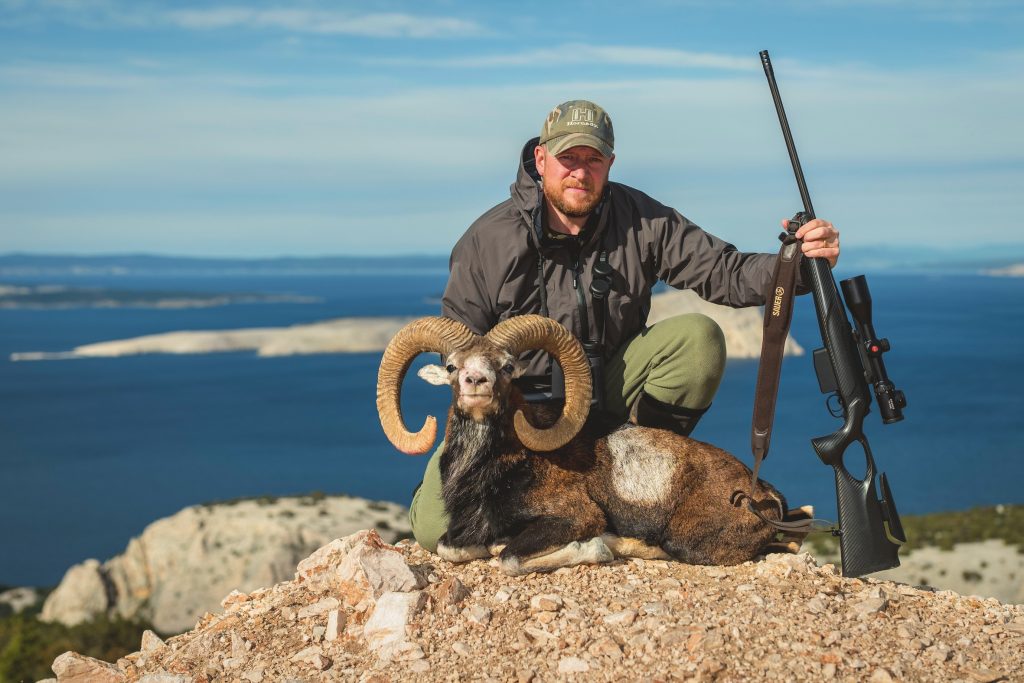The Driven Hunt
Paul Austin offers up his experience for any first-timer looking to expand their shooting horizons towards the continent
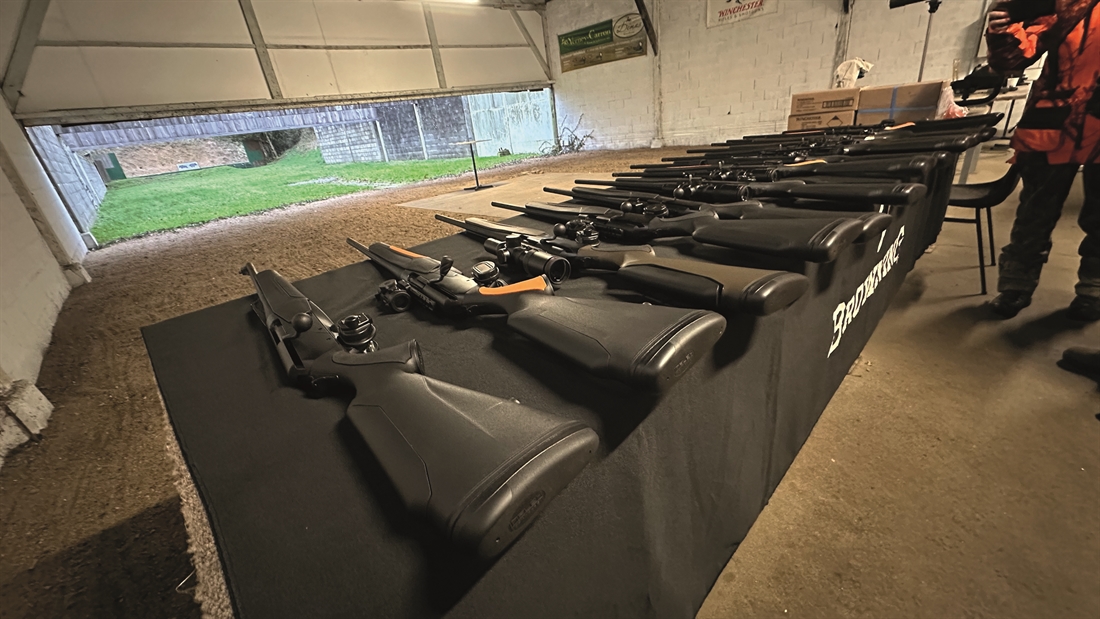
Autumn to early winter is the traditional time for the good-old press junket. However, this year January provided a little bonus with an unexpected email from the lovely people at Browning. The offer was a simple one – would I like to attend a long weekend of driven hunting in central France in search of wild boar and red deer? I thought long and hard about it over the time it took me to type: Yes!
The event was designed to illustrate the prowess of the all-new Maral 4X straight-pull and Bar 4X semi-auto in their natural environment – the driven hunt. Flights booked and bags packed, I was off to Charles de Gaulle. Emerging at arrivals I scanned for a Browning logo alongside my name among the sea of waiting cab drivers but there was no sign of either – always a slightly tense moment.
Seconds later a familiar smiling face emerged from the chaos as my Swedish counterpart and regular shooting buddy Erland Gunnarsson appeared. Panic over. I was immediately introduced to a new face in the form of his fellow Swedish journalist and YouTuber Katharina Olsson.
After a call to Martin (our designated driver and fellow gun from Browning) we found our way to the waiting mini-van. I took my seat alongside yet more familiar faces prior to the two-hour trip from Paris to Saint-Fargeau, our new home for the next three days.
Safely ensconced at a lovely little rural hotel, we got back on the bus for the first visit to the private hunting lodge and an initial fine-dining experience – breakfast, lunch and dinner were all being taken at the lodge for the duration.
The first evening was taken up with introductions to the Browning team, led by the ever smiling Adrien Koutny, a man fluent in no fewer than five languages, all of which he employed as journos from across the continent ate, drank and smiled their way through the evening. We took our first look at the hardware, donned our new blaze jackets and selected appropriately sized Browning thermal underwear, caps and other essentials from the generous goodie bags.
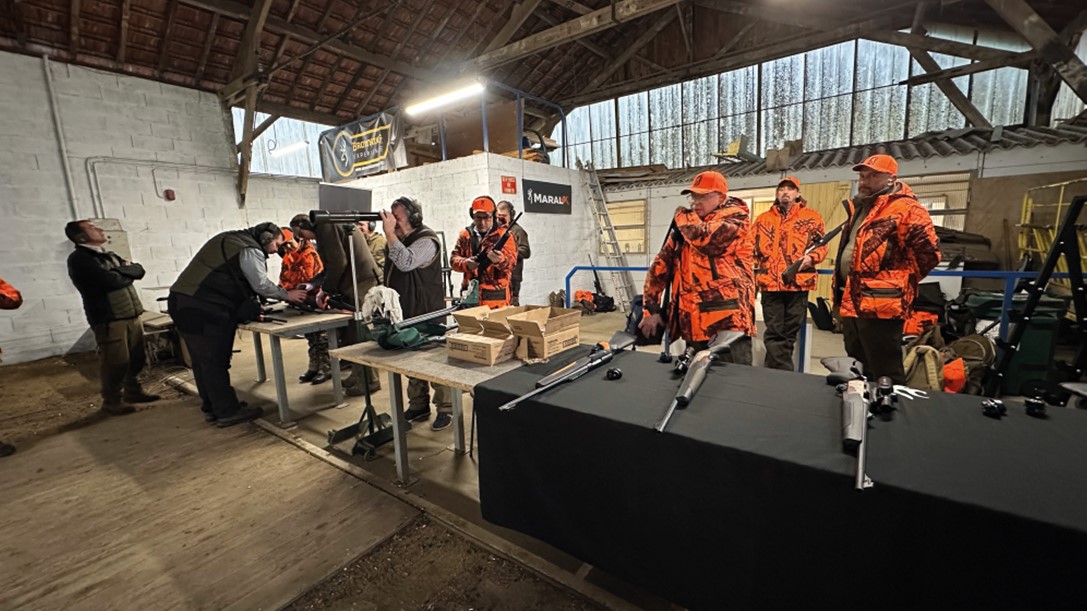
OFF TO THE RANGE
The next morning it was back to the lodge for breakfast followed by about an hour in the bus to the covered range where we could get some hands-on time with the Maral 4X and Bar 4X. This basically consisted of a few 35m shots at a simulated running boar, just to get a basic feel of the guns and make final selections for the hunt.
As a Brit, the straight-pull Maral 4X would be the obvious choice for me, as semi-auto centrefires are strictly out of bounds for us, but the temptation and novelty of hunting with a semi-auto .308 centrefire was too much of an opportunity for me to miss. Bruce Potts had just reviewed the Maral 4X for me anyway, so I convinced myself that my semi-auto choice was justified.
Although my new friend Katharina Olsson is every inch a Scandinavian – a typical blonde, blue-eyed beauty – she does lack an inch or two in one direction, namely upwards.
Hovering not much above 5ft, she was struggling with length-of-pull and eye relief until the Browning boys made the necessary adjustments, after which she was happily blasting away at the animated paper pigs with the best of ’em.
The deciding factor for me was the 1-6x scope on my leftie Bar 4X, which really suited me. There was a leftie Maral X4, but only with a red dot, which wasn’t really to my taste, so the Bar 4X won the day.
Loading was a little unusual, as French law dictates three-shots as the maximum capacity for a centrefire semi. The process consisted of inserting two in the mag, chambering a round, adding a third and you were good to go. The mag itself was also hinged rather than removable, another legal rather than technical requirement aimed at preventing anyone using high-capacity mags with the platform. Gun selected and sighted I was ready to go, and with all the hardware safely back in their slips it was back to the lodge for our first driven hunt.
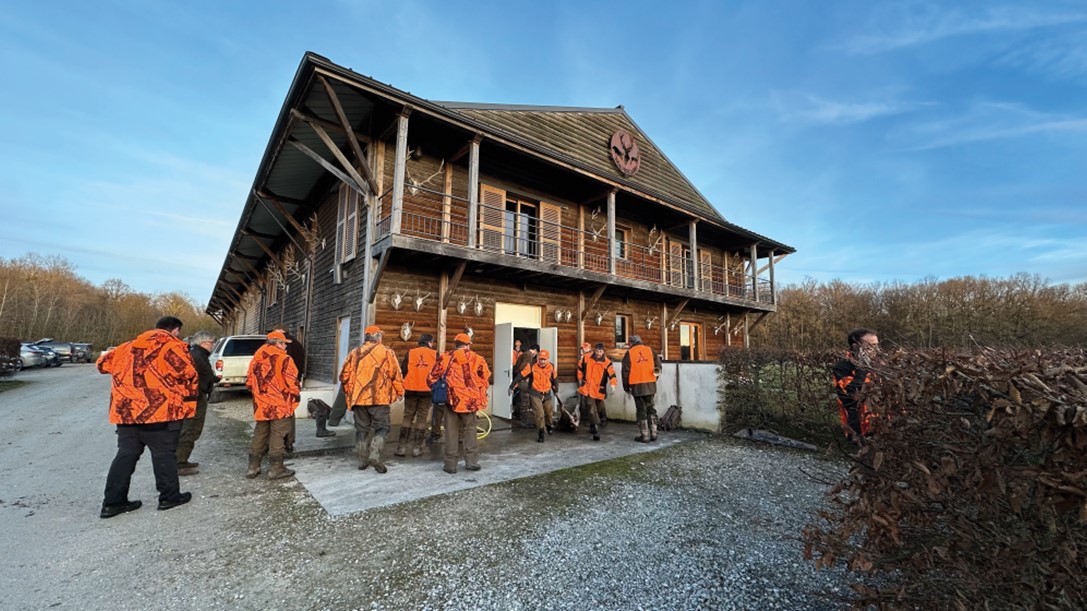
SERIOUS BUSINESS
The first order of business when it comes to driven hunting is to understand the rules of the game, these vary considerably from hunt to hunt and even from drive to drive, so you must pay very close attention to the dos and don’ts.
The chef de hunt made it clear that there was no grey areas in this department, and given the proximity of other guns, beaters and their dogs there was absolutely no margin for error. .308 rounds aren’t going to run out of steam at 150m like a shotgun. They can potentially travel for miles and cause unimaginable damage to anything in their path.
Browning also made it clear that they wouldn’t be picking up the tab for any errors or reckless decisions when it came to quarry selection, so any faux pas would be yours and yours alone with the penalties to be paid in full and on the day!
If you watch the highlights of a driven hunt online you’d be forgiven for thinking it’s like the wild west, with guns firing in all directions, but that certainly isn’t the case. There are very strict rules that must be adhered to.
The first is obviously your arc of fire. The gun line is often (but not always) strung out along a ride or forest track, with each gun perhaps 70-100m apart, and there’s a 30° rule to avoid firing along that line. You can also only fire in the opposite direction to the beating line. On this trip this usually meant that if you weren’t shooting across the track you were definitely shooting in the wrong direction. Nobody did, I hasten to add.
You can’t not shoot anything that hasn’t crossed the track, and shooting on the track itself was another big no-no. This basically doesn’t leave you with a great deal of room to play with, so if something does appear in your line of fire you have to think very fast, ID your target and make a rock-solid decision in an instant. If you’re a bit trigger happy, ironic though it may seem, driven hunting definitely isn’t for you.
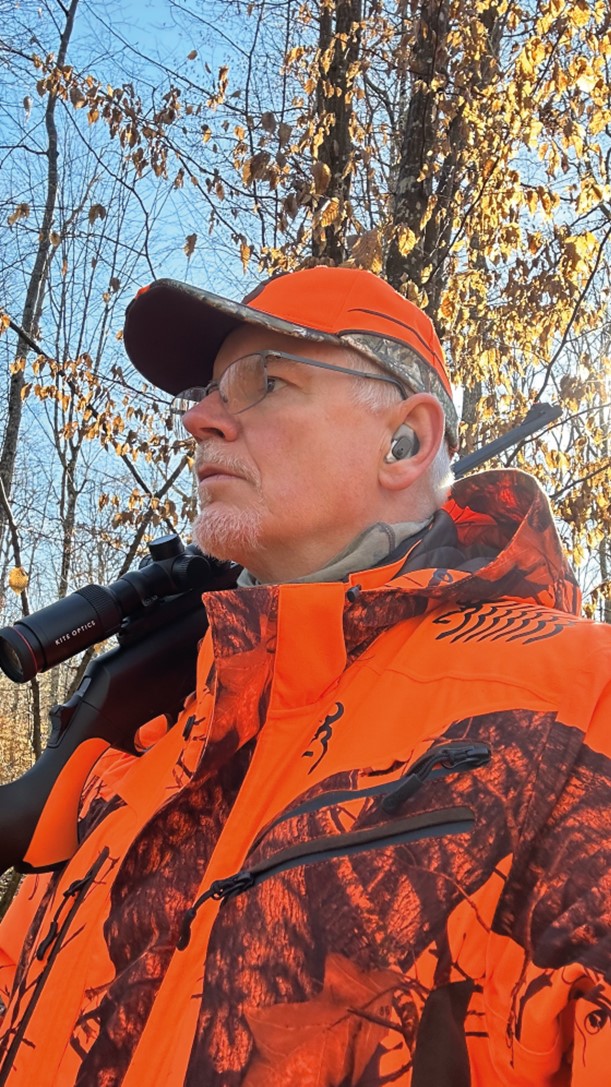
THE FIRST HOORAH
Once dropped off at your peg it’s time to mount the stand and load up. On this particular hunt you could shoot at any point from here on in until you hear the three long blasts signifying the end of the drive.
Once loaded and safe you turn to look into the beating line in the hope of spotting something approaching that may cross the line. Then you can turn and shoot, assuming it enters your arc of fire. It’s a very dynamic, free-hand, fast-fire form of shooting, and with a maximum range of 60m within your arc you have to be quick.
Unusually on this first drive the beaters and dogs (or at least some of them) started on our gun line and went directly ahead into the forest. Three lines of guns (over 20 in total) had been arrayed around a large triangular patch of forest, the idea being to push the game through one of the other lines. The beaters would swing around and push anything else back towards our line later in the drive.
This late in the season, anything left in the forest is likely to be smart, well aware that breaking the gun line spells trouble. It’s therefore not uncommon for beasts to break through the beating line and head in your direction, even with the beating line heading away, so it always pays to stay on your toes.
Initially nothing broke our line, but later a hind with two calves ploughed through mid-way between myself and Mark, a very experienced Belgian journalist. The threesome were really travelling and it wasn’t until they started to cross the track that I spotted them. All three were safely within the 30° no-fire zone, but within seconds they were 30-40m inside the adjacent forest, and so bunched up there was no safe shot.
They then broke left, offering Mark a glimmer of hope, but they were still too bunched up for a clean shot. At this point in the season the calves are so large it was only the hind’s position at the head the pack that made it clear who was in charge. It was a slim chance but neither Mark nor I was willing to commit.
A few minutes later there was a huge kerfuffle further down the line, with dogs baying and barking, their bells jangling as beaters yelled and blew their hunting horns. A boar! A few seconds later three shots rang out in quick succession – surely a hit. Not long after that the horn blew three long blasts, echoed across the forest as the other beaters signalled the end of the first drive.
Back at the rallying point, the guns and beaters met up around a trailer containing a single small male boar. Everyone assumed the prize belonged to Bernd Helbach, the man responsible for the three-shot volley a little earlier. But when asked he simply smiled and said, “Ground, ground, tree!” A fox clearly had a very lucky escape.
This illustrates one of my favourite things about driven hunting. It isn’t about bragging rights. If you get a chance you take it; if you miss it’s all smiles and better luck next time.
There are no bar-room lawyers droning on with some half-baked ‘shoulda coulda’ theory. The opportunities are so random and fleeting that there’s no shame in a missed opportunity. It’s all very egalitarian, which is particularly appropriate in a French forest.
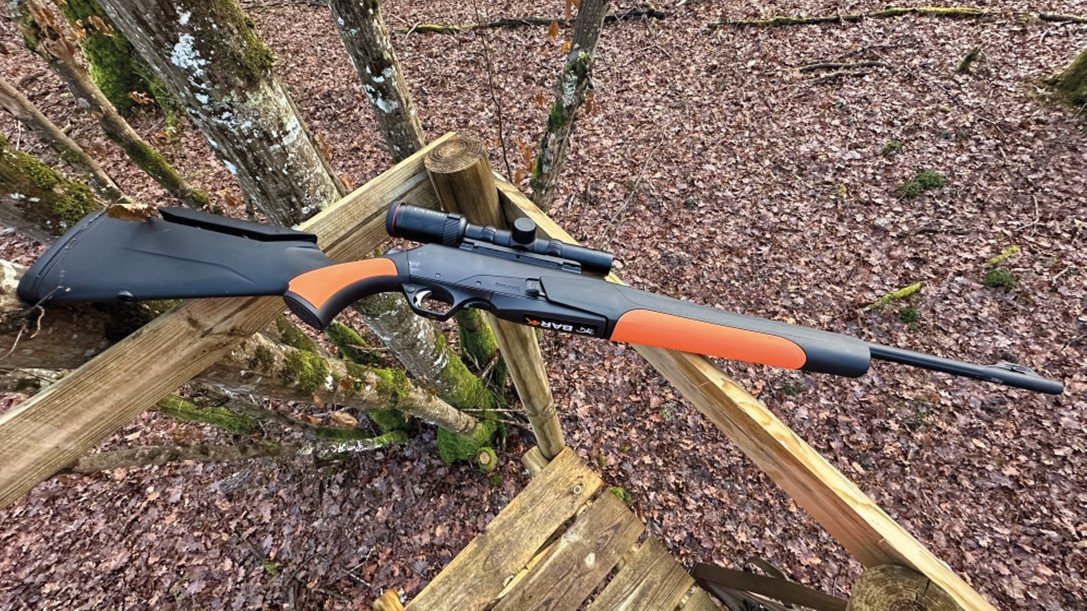
THE SECOND DRIVE
Here’s an example of why you need to pay very close attention, as the rules can change from drive to drive. For this drive we were deeper in the forest on highseats. Initially the same rules applied: you could shoot behind but not towards the shooting line as before, and a 60m maximum range with the 30° rule applied relative to other guns. However, after the beating line had passed (approximately 40 minutes into the drive) you could shoot in front and behind but only within a 30m range of your highseat.
Although the rules had changed our luck hadn’t. It was a silent drive, with no shots fired and nothing spotted. The three blasts echoed again through the forest and our day was done. Back at the lodge the display was, shall we say, somewhat less than impressive, with just one small boar to show for our efforts.
The chef de hunt was clearly a little perplexed that only 11 shots had been fired by the 20-plus guns. He thanked all the hunters for their exemplary behaviour but was clearly very puzzled by the poor show. This is a private ground that has never been shot by outsiders or commercially before and only hunted five times per season, typically generating 16-18 animals per driven day. A single boar was a mystery, but that’s why it’s called hunting and not shooting. His only recourse was an extended frown, a shake of the head and a classic Gallic shrug along, with a promise of better sport the following day.
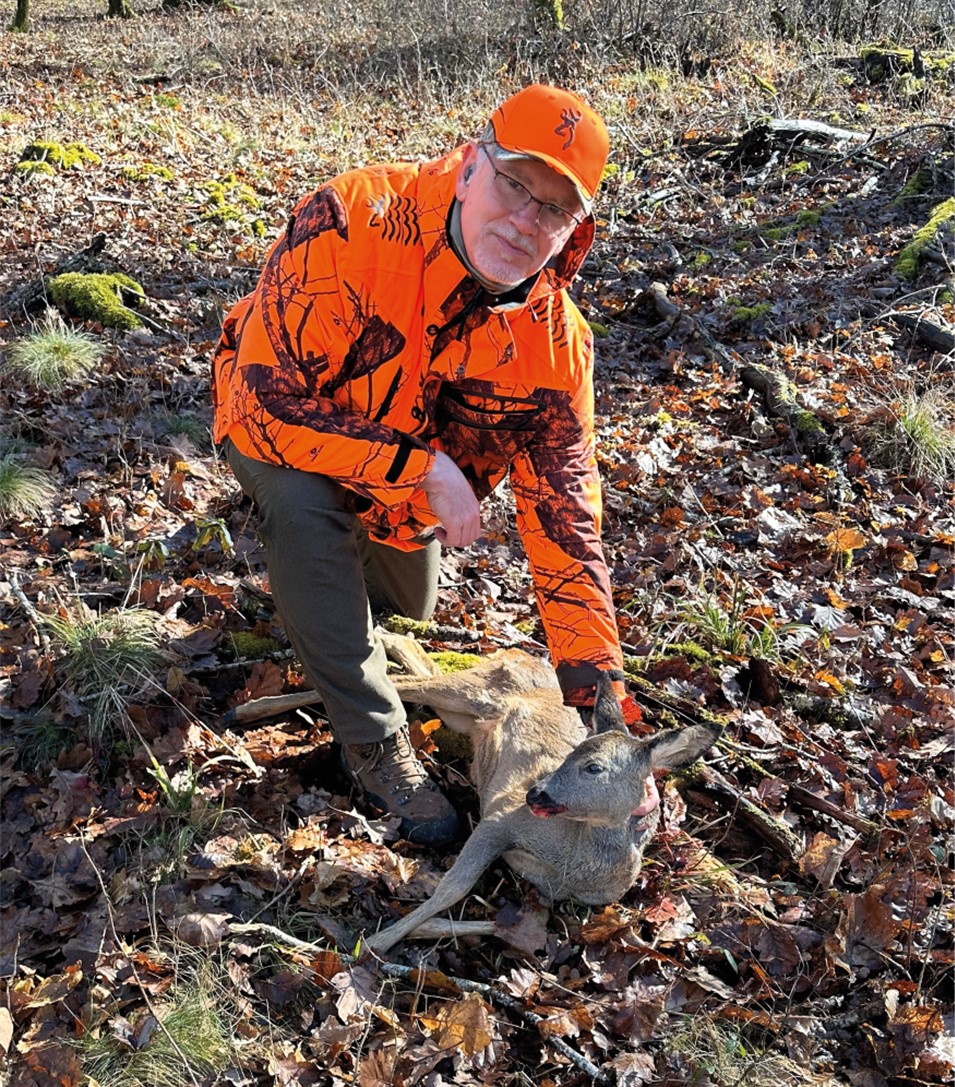
THE FINAL DAY
The first drive started in familiar fashion, with the guns strung out with the track to our rear and a wedge of beaters parallel to our position attempting to push the quarry through the gun line. It was quiet at first and then things started to happen.
The dogs and horns grew louder and closer, shots range out, and fleeting glimpses appeared deep in the line.
Suddenly a large keiler thundered out of the forest some 80m in and banked hard right, crashing through the beating line followed by a jangling mix of hounds and terriers. It vanished into the forest but no shots rang out. Clearly this old campaigner knew better than to cross the gun line.
Erland was my peg buddy, some 80m further up, and suddenly I thought his chance had come. He’d taken a few pot shots at the odd fox the previous day but had failed to connect. This time a keiler was heading straight at him, which was quite a sobering prospect as we were on the ground rather than on highseats. I watched it crash through the undergrowth, fully expecting it to cross the track followed closely by a ‘Texas heart shot’ from Mr Gunnarsson! It didn’t happen. Ten meters away from what I imagine was a very focused Erland, it spotted him and jinked hard right, heading straight in my direction.
There was nothing to do but stay completely still and hope it changed tack, crossed the track and offered a shot. Alas it was not to be. It charged past, maybe 12m in front of me, correcting course slightly as it spotted a bright orange monolith attempting to impersonate a tree. It continued on at full gallop, tracing its parallel path along the wrong side of the shooting line. Moments later it finally made a wrong move and crossed, followed by a volley of shots from a peg further down the line.
The horns sounded and the drive was over. Back at the rallying point things were looking up with a collection of hogs and roe deer appearing in the ATV trailer, with the highlight being a 66kg keiler taken by Martin, my peg buddy from the previous day.
THE LAST CHANCE SALOON
I was dropped off first for the next drive and guided to my peg by one of the 25 members of the club, who by now was looking a little brighter given that a few shots had been successfully fired. Our 400yd stroll along a ride found me at what seemed to be a pretty isolated peg.
The same rules applied: beaters ahead, shots to the rear. The wait began. The odd toot on the horn and occasional lost hound meant the drive was on. Then some 80m to my left some familiar heads appeared in the bush, three or four at first then more. Many more.
Way beyond the maximum 60m range and at almost 90° to my peg, a herd of reds casually crossed the ride in total silence. Three or four deep in places and perhaps 50 strong, they glided into the wood on the opposite side and within a few strides had vanished. Safe from a shot based on pretty much every rule we’d be given, it was clear proof that there was indeed a lot of game on this ground we simply hadn’t seen. To be honest it wasn’t even particularly frustrating – it was just a lovely sight to see.
Buoyed up by my little encounter, I went back to the task in hand but soon got distracted by the evening light streaming through the trees. I grabbed my camera, intending to snap an image for this article, and was just in the process of framing the scene when a large hind bounded through less that 20m away. Panicked, I looked up, camera in one hand rifle in the other – and was left watching her vanish into the distance.
I couldn’t have taken a shot anyway, as hinds were off the menu, but this is a fine example of the importance of focus. She could just as easily have been a stag and I would have missed my best chance of the entire trip. This is one of the key attributes of driven hunting. You may be on a peg for two hours and see nothing, and then in an instant your chance appears. So be ready and stay focused.
After this last encounter I must admit that I thought the hunting gods were against me, but I was wrong. Even though the best tactic is to monitor the beating line closely, it’s always worth the occasional look over your shoulder on the off chance that something has wandered into your field of fire.
I did exactly that. A quick glance to the rear and there it was – a roe about 70m out and at 45° to my peg, heading straight for me at full tilt. I’ve no idea what it was running from, but it was certainly making a concerted effort to get away from something.
At 35m out it spotted me and jinked hard left, presenting a perfect broadside as it crossed directly in front of me. I shouldered the gun, levelled the red dot just ahead of its chest and fired. The shot hit home and the roe rolled and crumpled to the ground. It appears that some practice on the Gaim VR driven hunt simulator had paid dividends.
Not long after that the horns blew and the hunt was over. My guide reappeared not long after and I think my smile said it all. I’m not sure which of us was more pleased, but it was without doubt the perfect finish. As we crossed the ride to inspect my prize, several beaters appeared offering yet more smiles and congratulations. Rolling over my small prize revealed a perfect chest shot – the icing on the cake and a shot I’ll never forget.
Back at the lodge the tableau was a marked improvement on the previous day’s efforts, with five boar, five roe and a lone red calf on display. Prior to the event I had dreamed of stags or perhaps a huge keiler, but I wouldn’t have traded my little roe for any of them.
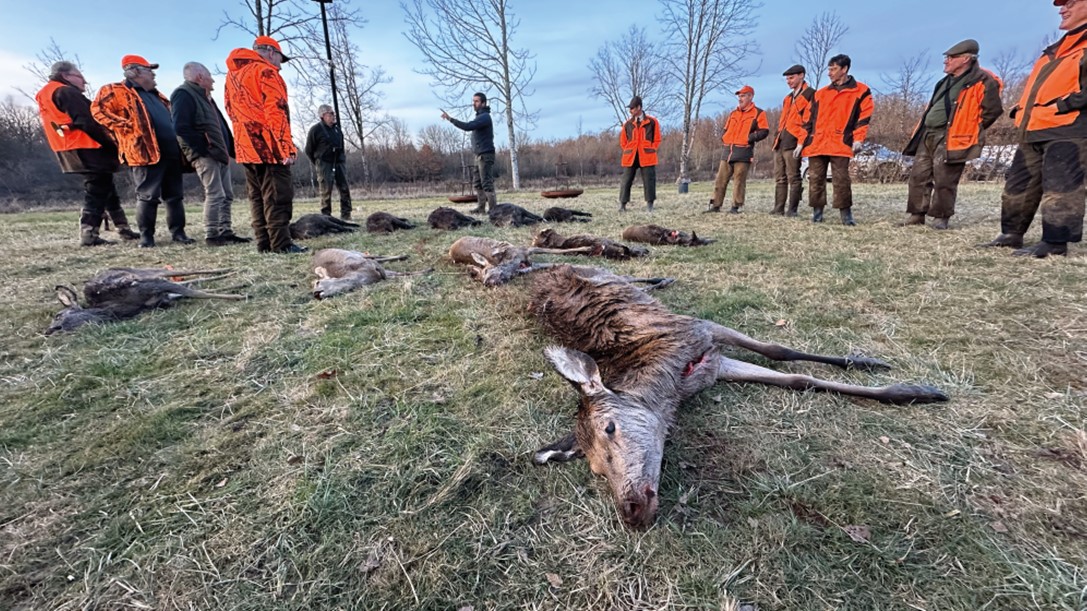
THE RULES OF ENGAGEMENT
EACH HUNTER WAS AUTHORISED TO SHOOT
One red deer or fawn
One roe deer
Three wild boar
Unlimited foxes
STRICTLY FORBIDDEN
Hinds
Red deer over 8 antlers
Young red deer (spikers) over 20cm over head
Female boar over 70kg
FINES TO BE PAID FOR
Red deer over 8 antlers €2000
Red deer over 10 antlers €5000
Red deer over 12 antlers €7000
Young red deer over 20cm (spikers) €2000
Hinds over 2 years old €2000
Female boar over 70kg €1000
For further information on the superb, brand-new Maral 4X, visit: www.browning.eu
Related Articles
Get the latest news delivered direct to your door
Subscribe to Rifle Shooter
Elevate your shooting experience with a subscription to Rifle Shooter magazine, the UK’s premier publication for dedicated rifle enthusiasts.
Whether you’re a seasoned shot or new to the sport, Rifle Shooter delivers expert insights, in-depth gear reviews and invaluable techniques to enhance your skills. Each bi-monthly issue brings you the latest in deer stalking, foxing, long-range shooting, and international hunting adventures, all crafted by leading experts from Britain and around the world.
By subscribing, you’ll not only save on the retail price but also gain exclusive access to £2 million Public Liability Insurance, covering recreational and professional use of shotguns, rifles, and airguns.
Don’t miss out on the opportunity to join a community of passionate shooters and stay at the forefront of rifle technology and technique.



